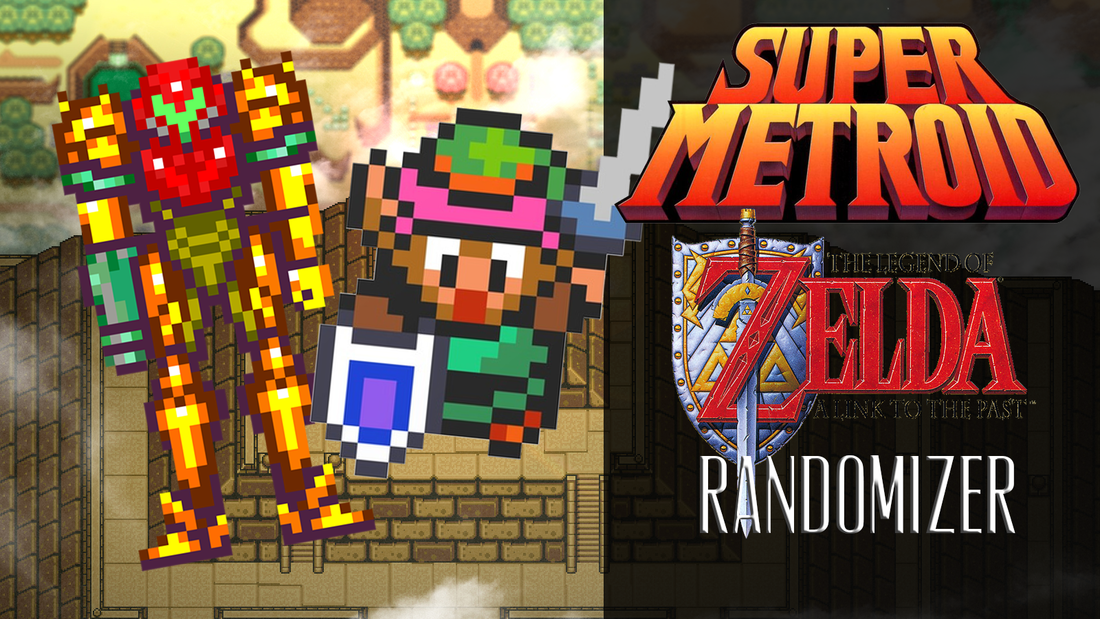

In a rando, once you have everything you need to complete the game, you’re in “Go Mode” because now you can go win. at least a few Missiles/Super Missiles/Power Bombs.
Link to the past and super metroid randomizer plus#
Reaching Ridley requires all of the above plus the Varia to keep Norfair’s heated rooms from damaging you. Also, the Space Jump is required to get out of Draygon’s room once you’ve killed her. Reaching Draygon requires the basic set plus the Gravity Suit to move through Maridia’s water, and the Speed Booster, as there is a hallway filled with speed blocks along the path. Reaching Kraid and Phantoon requires nothing special beyond the basic set. To reach Motherbrain you need to destroy the other four major bosses: Kraid, Phantoon, Draygon, and Ridley. In addition, to kill any boss in Super Metroid, you need either enough ammunition (Missiles/Super Missiles/Power Bombs) to deplete their HP, or the Charge Beam. This requires three Energy Tanks to survive her candy laser. To win the game you must destroy Motherbrain. I’ll be ignoring glitches for purposes of this text.) With glitches you can go “out of logic” and skip gates in a variety of ways, and you can usually configure your rando so this sort of thing is required. (I’m using a pretty loose definition of “need” here. For the rest, let’s start at the end and work backwards. Even the wackiest seeds are pretty reserved until you have this basic set. You also need the Morphing Ball to traverse certain areas and to lay Power Bombs. Missiles, Super Missiles, and Power Bombs are required to make any progress in any direction. To get almost anywhere in Super Metroid you need to use different kinds of ammunition to open doors and break blocks. What’s in logic in Super Metroid? Let’s break it down to just the mission-critical stuff you absolutely need to beat the game.

An item placed on your path in this way is said to be “in logic”. What a rando typically does is looks at all the gates in the game and builds a path from the start (where you have nothing) to the end (where you win) by placing one item at a time, keeping in mind what its already placed and what can be reached after each step. The nuts and bolts of the concept can get a lot more complicated than this, but it serves as a good starting point for these two games. The more gates a game has, the more robust the randomizer can be, and the more potential paths you’ll have to expore as you play through seed after seed. Six total paths and you’ve kind of seen everything the rando can throw at you. You go fight whatever boss is available from the start, use the key you get to reach whatever boss it allows you to reach, then use the next key you get to reach whatever boss it allows you to reach, then go win the game. If a game really does only have three gates (Dog/Lizard/Ferret) the rando options aren’t going to be very robust. The randomizer has you fighting these three bosses in some arbitrary order, though, depending on what blocks your path to them, so you have to explore things quite a bit differently. The vanilla game usually has you fighting Dog -> Lizard -> Ferret, and there are implications for exploring the game in that intended order. What a randomizer does is take the Dog Key, Lizard Key, and Ferret Key and puts them into a big sack, then shakes the sack up and redistributes the keys to the Dog Boss, Lizard Boss, and Ferret Boss. Any progression beyond the Dog Door is locked off until you do this. In the vanilla game you need to kill the Dog Boss to get the Dog Key and open the Dog Door, or whatever.

One of the ways game randomizers keep things fresh and interesting is by using gating. It has a randomizer which helps to keep the game fresh and interesting, but after only a couple of runs I’ve seen everything it can do and am tired of playing it. It is one of my favorite games of all time. It has a randomizer which helps to keep the game fresh and interesting, and even after dozens of seeds I’m thirsty for more.Ĭastlevania: Symphony of the Night is a nonlinear exploration-based platformer from the ’90s. Super Metroid is a nonlinear exploration-based platformer from the ’90s.


 0 kommentar(er)
0 kommentar(er)
